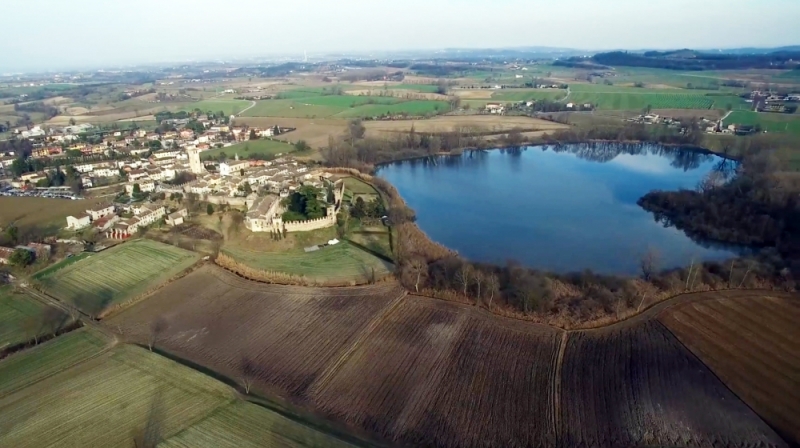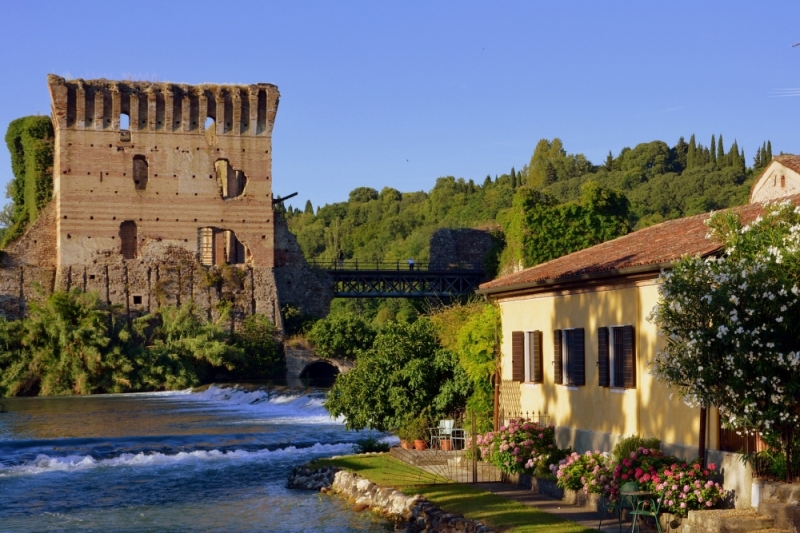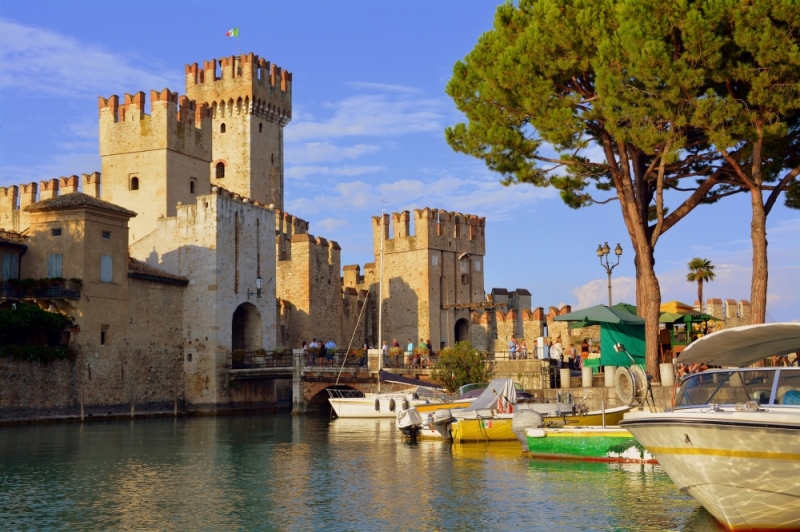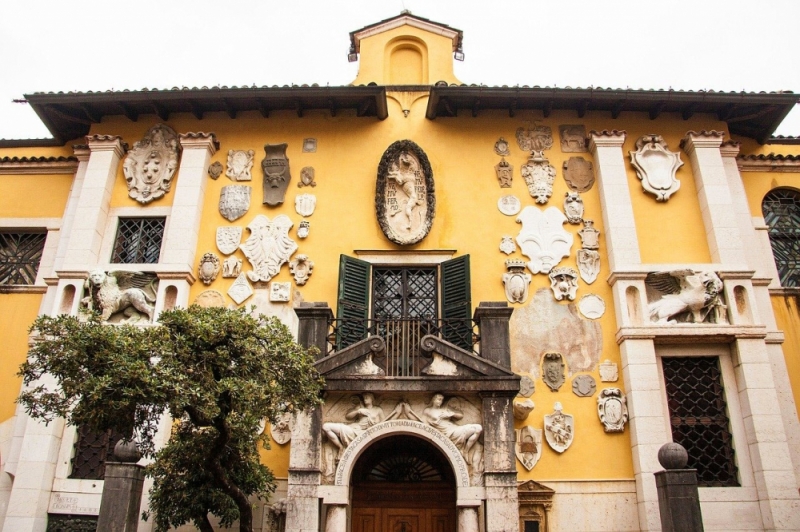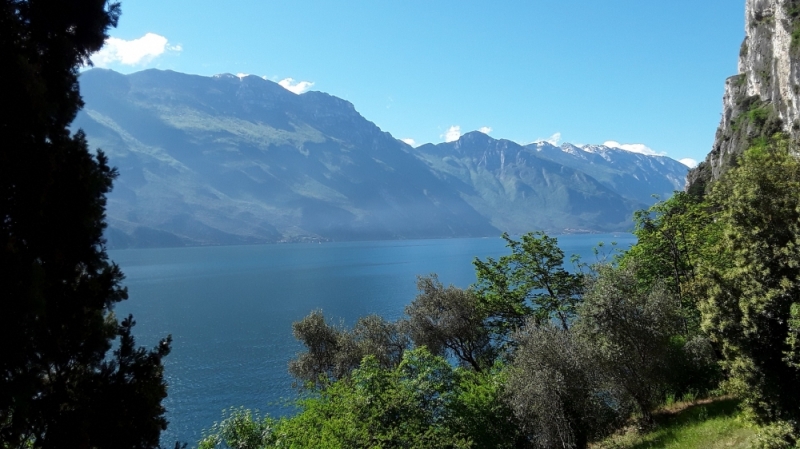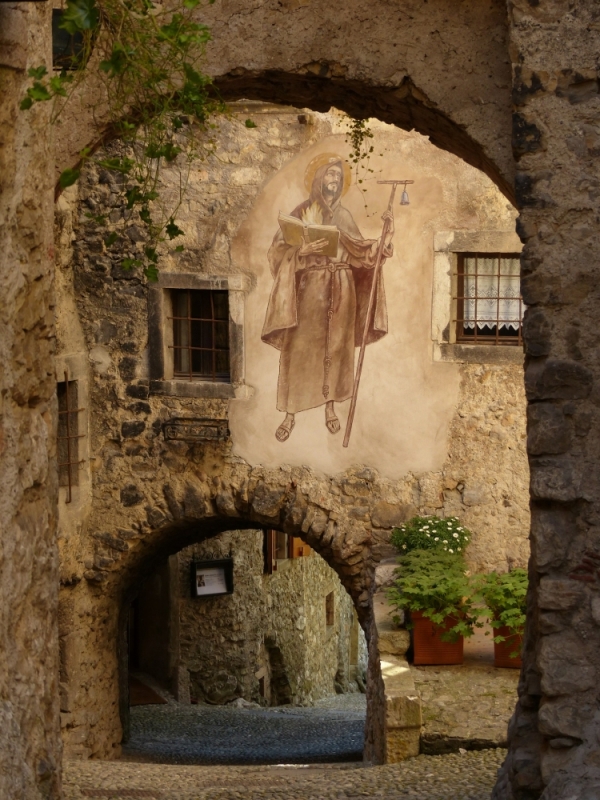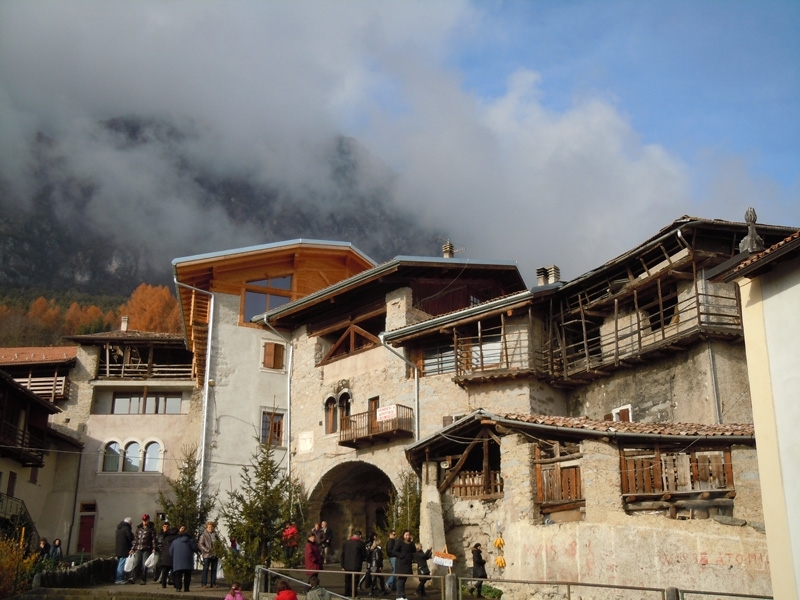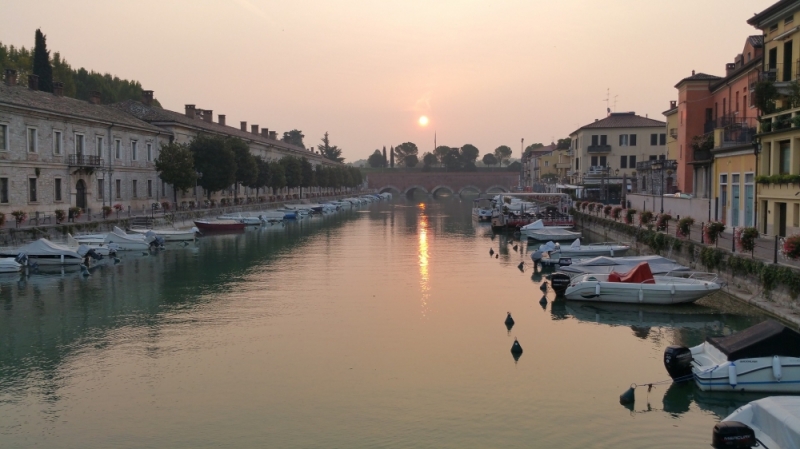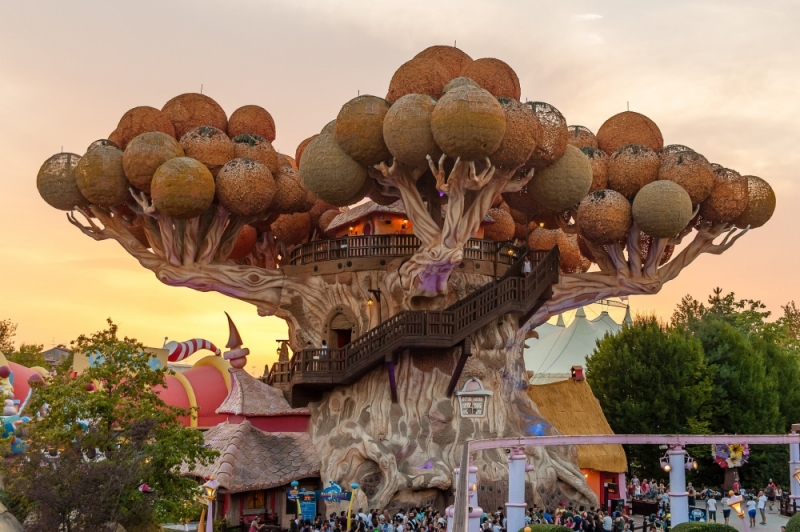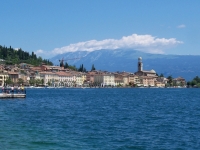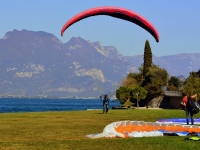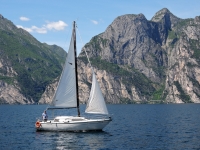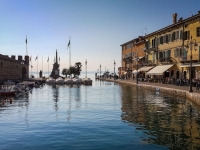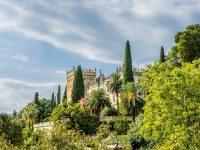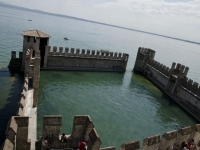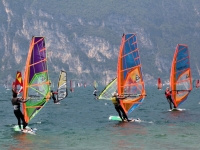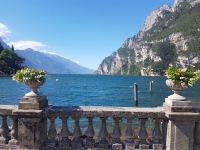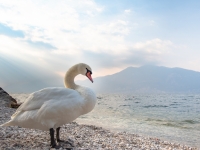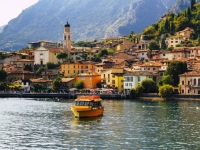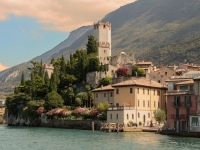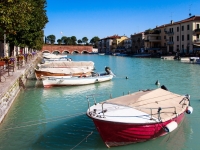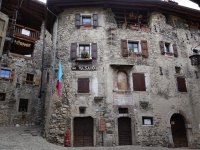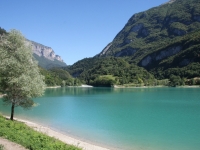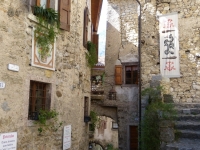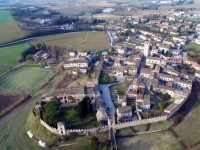The villages overlooking the largest lake in Italy
Lake Garda, also called Benaco, is a lake of glacial origin and is also the largest lake in Italy. The latter was formed about 66 million years ago and, given its position, has been disputed by various populations throughout history. The climate, the vegetation (mainly made up of olive trees, palm trees, cypresses, oleanders, lemons and orange trees), the landscapes and its blue waters make this place a destination not to be missed. On the lake you can treat yourself to a holiday of relaxation, sport and fun. Lake Garda, shared between the Italian regions of Lombardy, Veneto and Trentino, is a place full of magic and wonder. Its crystal clear waters welcome every type of visitor, offering relaxation in the spa, visits to beautiful historic villas and the discovery of enchanting medieval villages that overlook its shores. Among the most beautiful villages to visit on Lake Garda, many of which are elected among the "most beautiful villages in Italy", there are:
1. Riva del Garda (Trentino): This cute and particularly charming village is located in the upper part of Lake Trentino, in the province of Trento. At dusk, the lights that illuminate the port area and the boats create a magical atmosphere.
2. Torbole (Trentino): Also on the Trentino side, Torbole is a small but picturesque fishing town. The long walk on the shores of Lake Garda offers breathtaking views.
3. Malcesine (Veneto): This village overlooking the lake is famous for its medieval castle and narrow cobbled streets. The cable car that takes you to Monte Baldo leaves from here.
4. Torri del Benaco (Veneto): A characteristic village with a romantic lakefront and a spectacular panoramic view. From here you can admire the Scaligero Castle.
5. Bardolino (Veneto): Known for the wine of the same name, Bardolino offers a lively historic center with shops, restaurants and cafes. The walks along the lake are lovely.
6. Peschiera sul Garda (Veneto): Peschiera is surrounded by ancient walls and canals. Its historic center is picturesque and lively, with many places where you can taste local specialties.
7. Sirmione (Lombardy): Sirmione is famous for its thermal waters and the Scaligero Castle which stands on the tip of the peninsula. The caves of Catullus are another unmissable point of interest.
8. Desenzano (Lombardy): Desenzano is one of the largest cities on the lake and is known for its lively nightlife, elegant shops and beaches.
9. Salò (Lombardy): Salò offers an elegant lakeside promenade, with historic buildings and cafes overlooking the water. The Cathedral of Salò is an architectural jewel.
10. Limone sul Garda (Lombardy): Limone
Castellaro Lagusello
Starting from the South, the first stop is Castellaro Lagusello (Castlàr in the Mantuan dialect). This village is a fraction of Monzambano and stands on a hill, near a small heart-shaped lake. The small village takes its name from the lake and the castle , the latter dating back to 1100-1200 and is part of The most beautiful villages in Italy. Since 2011, the town Tacoli Fund Castellaro Lagusello, it becomes part of the World Heritage UNESCO '. The village was born around the 11th-12th century, but was mentioned for the first time in a document by Pope Eugene III in 1145. Thanks to its strategic position, it was disputed by Verona and Mantua, belonging to the Visconti, Gonzaga and Most Serene Republic of Venice. In 1637, the Serenissima put it up for auction, and the village was bought by Count Modernino Arrighi, for the sum of 545 ducats. The castle lost its defensive construction characteristics and, becoming the property of the count, was used as a noble residence. The castle, surrounded by embattled walls and ten towers, was divided into two areas: the one to the lake where the castellan was occupied, and the one to the north, for which a captain was responsible for defending the bridge area drawbridge. To this day the city walls and four (of the ten towers) have remained intact. The peculiarity of this place is the small lake (or lagusello) in the shape of a heart. Try the pumpkin tortelli or the typical Mozambano salami. The village can be visited both day and night, when the village is illuminated and breathes a fairytale atmosphere. To visit the village, just pass through the door with a drawbridge. Above the door, you can admire the square tower. Continuing to walk, you will find the Baroque Church dedicated to Saint Nicholas , mentioned for the first time in an ancient document of 1145 and in a bull by Pope Eugene III. The church, renovated during the 18th century, houses a wooden Madonna dating back to the fifteenth century and a collection of paintings from the seventeenth and eighteenth centuries. Arrived at the bottom of the village, you will find a small square, overlooked by Villa Arrighi, now owned by the Counts Taccoli and the church of San Giuseppe, a church incorporated into the villa which was completed in the first half of the eighteenth century and preserves within it some paintings of the seventeenth century.
Borghetto sul Mincio
This small village is a fraction of the municipality of Valeggio sul Mincio and appears as "a small Venice". The houses seem to rest on the water and the urban conformation of this village dates back to the Lombard period. Over the centuries, its harmony between history and nature has made this village a must-see stop. In fact, its medieval appearance has remained intact, as shown by the bell tower, the wheels of the water mills (which were once used for milling wheat and cereals) and the fortresses of the Visconteo Bridge. The " Ponte Lungo " is the emblem of the medieval past of the village. It is so called by the inhabitants for its length of 650mt and connects to the Scaliger Castle, thanks to two crenellated curtain walls. The bridge is a powerful fortified dam, built in the 14th century by the Duke of Milan, to protect the eastern borders of the duchy. Overlooking Borghetto, there is Scaliger Castle, built between the 10th and 14th centuries, of which the Tonda Tower dating back to the 10th century has remained intact. and a drawbridge. Both the Visconti bridge and the Castle make this place a medieval refuge where you can spend a pleasant day and lose yourself in the narrow streets that will take you back to the past. We also advise you to visit the Church of San Marco Evangelista, dating back to the 18th century, built on the remains of a previous Romanesque church of the 11th century dedicated to Santa Maria e, the statue of S. Giovanni Nepomuceno, set in the walls of a house. According to tradition, the statue would protect those who fall into the river from drowning. If you want to take a break at the restaurant, you can try the fresh pasta and the famous "Love knot". A few steps away you will also find the Parco Giardino Sigurtà, among the most beautiful parks of Lake Garda. After having had an important strategic role during the Venetian domination, Borghetto became an agricultural village and the mills appeared, used to grind wheat, which functioned thanks to the waters of the river Mincio. The mills were used until 1900 when, with the arrival of industrial production, they were turned into commercial activities. Also take a walk on the wooden bridge of the village, from which you can admire the fantastic panorama. In the village there is also a church dedicated to San Marco Evangelista, dating back to the 18th century; the church was rebuilt in neoclassical style, on the remains of the ancient Romanesque church dedicated to Santa Maria from the 11th century, of which two fifteenth-century frescoes have survived.
Sirmione, Desenzano and Montichiari
Near Borghetto sul Mincio, there is Sirmione, an ancient medieval village that became an important fortified center during the hegemony of the Lords of Verona, the Della Scala, in the thirteenth century. To see the Rocca Scaligera , located in the historic center, dates back to that period and the Roman Villa "Terme di Catullo" , which belonged to the poet Catullus from which it takes its name. Sirmione, is also a famous spa resort and owes its development to the "Bojola" (boiling water) source, already known during the Renaissance. Give yourself a walk along the streets of Desenzano. Here it is necessary to stop at the Vivaldi ice cream shop. Also visit the Castle of Desenzano and finally go inland to Montichiari. It is a town about 10 km from Desenzano, where you can visit the Montichiari Cathedral dedicated to S. Maria Assunta and the Bonoris Castle which protects the town and its inhabitants since 1107.
Manerba, the Vittoriale and Giardini Heller
From Montechiari towards Manerba, I recommend a stop at the town of Lonato Castle called "Rocca". From there, in a few kilometers, you will be at the Rocca Archaeological Park in Manerba del Garda. The Rocca di Manerba is a promontory overlooking Lake Garda and is one of the most beautiful viewpoints of the whole Lake. On the Rocca stands the Park, here there is a museum with archaeological remains that are landscaped and naturalistic aspects of the territory of Manerba. A must is a visit to the dwellings of the Bronze Age , a UNESCO world heritage site. Continue towards the Vittoriale degli Italiani, a monumental citadel built in Gardone Riviera by the poet Gabriele d'Annunzio together with the architect Giancarlo Maroni. A complex of buildings, streets, squares, an open-air theater, gardens and waterways erected between 1921 and 1938. The Vittoriale is a truly unique house-museum, a mirror of the excess and eccentricity of D announcement, where you will find rooms filled to capacity with memories, memorabilia, works of art, sculptures, medals of valor, relics, thousands of books, but also planes hanging from the ceiling of World War I. Think that in the park the bow of the Military ship "Puglia" was grafted, which was donated to d'Annunzio by the Navy in 1927 and which was transported by rail from La Spezia (300 km) with twenty railway cars and numerous military trucks . After the Vittoriale I recommend a visit to the beautiful Heller Gardens . A botanical garden that, in about 10,000 square meters, boasts botanical species from all over the world, from the Alps to the Himalayas, from Mato Grosso to New Zealand, from Japan to Australia, to Canada, to Africa.
Tremosine
Going north, on the Brescia side, is Tremosine , a scattered Italian town of 2 099 inhabitants in the province of Brescia, in Lombardy. It is not really a village, but rather it is the set of eighteen hamlets divided between the lake and the mountains above Limone sul Garda. Only the hamlet of Campione overlooks Lake Garda, while the others are located on the plateau. Thanks to its proximity to the lake, the climate is mild in winter and warm, but not muggy, in summer. The name appears on the investiture bull of the assets, issued by Pope Urban III, in favor of the archpriest Martin. According to Mazza (1986), it could derive from the Etruscan Tremusina. Instead, according to another theory, also supported by Mazza, the name derives from hopper, which means "measure of three moggi", given the conformation of the territory. In this territory there were probably settlements already from the Neolithic and there are also testimonies of settlements in the Etruscan era. We recommend starting from Piazza Marconi in Pieve di Tremosine , the main square of the city. From the terrace next to the Miralago hotel restaurant, you can enjoy the view and admire Mount Baldo, Malcesine and the entire Veronese shore. From Piazza Cozzaglio, you can reach the Church of San Giovanni Battista, a Gothic-style building dating back to the 12th century, built on the remains of an ancient parish church and mentioned in 1186 in a bull of Pope Urban III. The terrace, located next to the church, will allow you to admire the view of Lake Garda. If you are not afraid of heights, you can enjoy the view from the Paradiso hotel, which has a terrace suspended in the void 365 meters high. Not to be missed are the Church of San Bartolomeo and the trenches of the First World War , which go from Pieve to Polzone, and were built to block access to the valley. The route that leads to the village is also worth seeing: passing through the Forra , a hole in the rock, it is possible to admire green meadows, hills and olive groves belonging to the Alto Garda Bresciano Park, a place suitable for both hikers and families. As for the gastronomic aspect, we advise you to try the Formagella di Tremosine, the polenta and the spit.
Canale di Tenno
Canale di Tenno (or Villa Canale) is one of the four villages that make up Villa del Monte , the largest village in the municipality of Tenno in Trentino and is a true medieval jewel. In addition to Canale, Villa Sant'Antonio, Villa Pastoedo and Villa Calvola are also part of Ville del Monte. Visiting its alleys and courtyards, it will seem like finding yourself back in the 1200s, especially for the wooden floors decorated with corn on the cob and banners. The town was almost abandoned after the First World War, and was reborn after the Second World War thanks to the artists who came from all over Italy and Europe. In this village, among shops and perfectly preserved city walls, you can relax and lose yourself in the narrow cobbled streets. The painter Giacomo Vittone was so fascinated by this village, to immortalize it in various works; to date the House of Artists is dedicated to him , a meeting place for artists from all over Europe visiting the village. The Artists' House is also home to exhibitions, conferences and cultural initiatives. In the village there is also the Agricultural Tools Museum , where the tools that were used for viticulture, breeding and cultivation of the fields are kept. From the village it is also possible to walk to the evocative turquoise lake of Tenno. In summer, during the second week of August, there is an historical re-enactment event known as Rustico Medioevo, while in December there are some characteristic Christmas markets to visit. Nearby you can also see the village of Calvola and the village of Frapporta.
Rank in Bleggio
Rango nel Bleggio is the classic small rural mountain village, surrounded by meadows and pastures, stone houses, fountains and geranium plants on the windows. The village appears as a set of houses connected by arches, arcades and tunnels. You can't miss its Christmas markets, which attract many visitors. Try the Ciuiga del Banale, (a kind of pork sausage and turnips) and the Bleggio nuts. A school museum has also been established in this village, where books and notebooks that were used many years ago are kept.
In Rango there are also the colorful walls of the village of Balbido , with murals that tell the story of peasants and ancient crafts.
To see are also Lazise, Punta San Vigilio, Malcesine, Riva del Garda and Salò (known for having been the Capital of the Italian Social Republic from '43 to '45).
In Rango there are also the colorful walls of the village of Balbido , with murals that tell the story of peasants and ancient crafts.
To see are also Lazise, Punta San Vigilio, Malcesine, Riva del Garda and Salò (known for having been the Capital of the Italian Social Republic from '43 to '45).
Peschiera del Garda
Peschiera del Garda, a village in the province of Verona, overlooking the southernmost shore of Lake Garda, offers a day to walk among canals, bridges, churches, historic buildings, fortifications and small piers where boats stop. Easily reachable also from Milan, Peschiera, thanks to the beauties of the lake it overlooks, of the whole surrounding area, of the most famous amusement parks in Italy, including Gardaland , is one of the most known and visited villages. Get lost walking through the beautiful old town, in the alleys of its ramparts, in fact, the myriad of shops and restaurants, as well as beautiful historic buildings, squares, churches and impressive military structures. The Fortress of Peschiera del Garda, or Rocca, is a small architectural gem, enclosed in an imposing sixteenth-century pentagonal wall, with beautiful bastions and imposing gateways. One of the most suggestive areas of the town is the pedestrian bridge , which crosses the outer canal of the fortress. The Porta Brescia, a western entrance to the ancient fortress, is also very interesting. Above Porta Brescia, an ancient roundabout walkway, joins the Tognon and Feltrin ramparts: from here you can admire the whole fortress from above, with unique views. From Bastione Tognon and Piazza Betteloni, right on the marina, boats leave for trips on the lake and to reach the other villages. In the old Palazzina di Comando della Piazzaforte , or the Presidio, more commonly known as the Palazzina Storica, it is here that, after the defeat of Caporetto, the glorious resistance on the Piave river was organized. Inside the hall where, on November 8th 1917, King Vittorio Emanuele III and the allies gathered for the historic Peschiera Convention, has remained intact since then. The neoclassical building, which also houses the Military Museum, is surrounded by the beautiful Catullo Park. Just outside the Porta Verona is the Bastione San Marco and, right in front of it, you cannot miss a visit to the Artillery Barracks , open to the public after a meticulous restoration. The great arsenal, built between 1854 and 1857 by Radetzky in the stronghold of Peschiera., Is home to the Historical Archive and the Civic Library, with spaces for consultation and reading, and also hosts theatrical and musical performances and spaces for exhibitions, reviews and exhibitions. On the vast Piazza Ferdinando di Savoia, better known as Piazza d'Armi, near the Cantarane Bastion, stands the Military Prison and the Parish Church of San Martino, right next to where remains of the Roman settlement were found, probably arisen towards the end of the first century BC. Don't miss the 16th century Ponte dei Voltoni, with its beautiful terracotta arches, overlooking the Canale di Mezzo, where the fishermen's boats of Peschiera del Garda stand. From the bridge you can also admire the islet, with its luxuriant vegetation, beyond which the waters of the lake pour into the river.
Malcesine
The Municipality of Malcesine has 3,800 inhabitants, is located on the eastern shore of Lake Garda; is the last municipality north of the Province of Verona, on the border with Trentino. Malcesine is the Orange Flag of the Italian Touring Club, a tourist-environmental quality brand, and the recognition of an offer of excellence and quality hospitality. The history of Malcesine revolves around the Scaligero Castle (excellently preserved and home to the museums of Natural Sciences, Local History, Venetian Galee as well as the room dedicated to the stay of JW Goethe in Malcesine) and to the Palazzo dei Capitani of the Lake of the Most Serene Republic of Venice . Two historic buildings, but still alive and vital, two cultural containers in which theatrical performances, music concerts, art exhibitions are organized, and where over 300 weddings a year are celebrated, mainly by English couples conquered by the magic of the place, of light, of colors.
Entertainment
If you are with the little ones, but also if you are alone, and want to listen to the child inside you, Gardaland is the right place. Gardaland is the largest amusement park in Italy and is located in Ronchi, in the municipality of Castelnuovo del Garda, in the province of Verona. It is visited every year by about 3 million people and in 2005 it was ranked fifth in the ranking of the top ten best-selling amusement parks in the world.
For movie lovers, in the vicinity of Gardaland, there is Movieland , a park where the sets of successful Hollywood productions have been reconstructed from films set in the far west to those set in space. Fun is guaranteed!
Climate, curiosity and advice
Climate: on the shores of Lake Garda the climate is mild and this makes it possible to grow vines, olives and citrus fruits. Winters are quite cold while summers are hot and quite sunny, but also stormy.
Curiosity: among the 25 tributaries of the Garda, there is a river that is considered among the shortest in the world, in fact it is only 175 meters long. This is the Aril River, sometimes called Ri.
Tips: for the more adventurous, there is a thrilling experience: try the swing that is on the Garda. To reach it you have to take a path that goes up to Palom de Pèzol and from there, you can enjoy the whole panorama.


